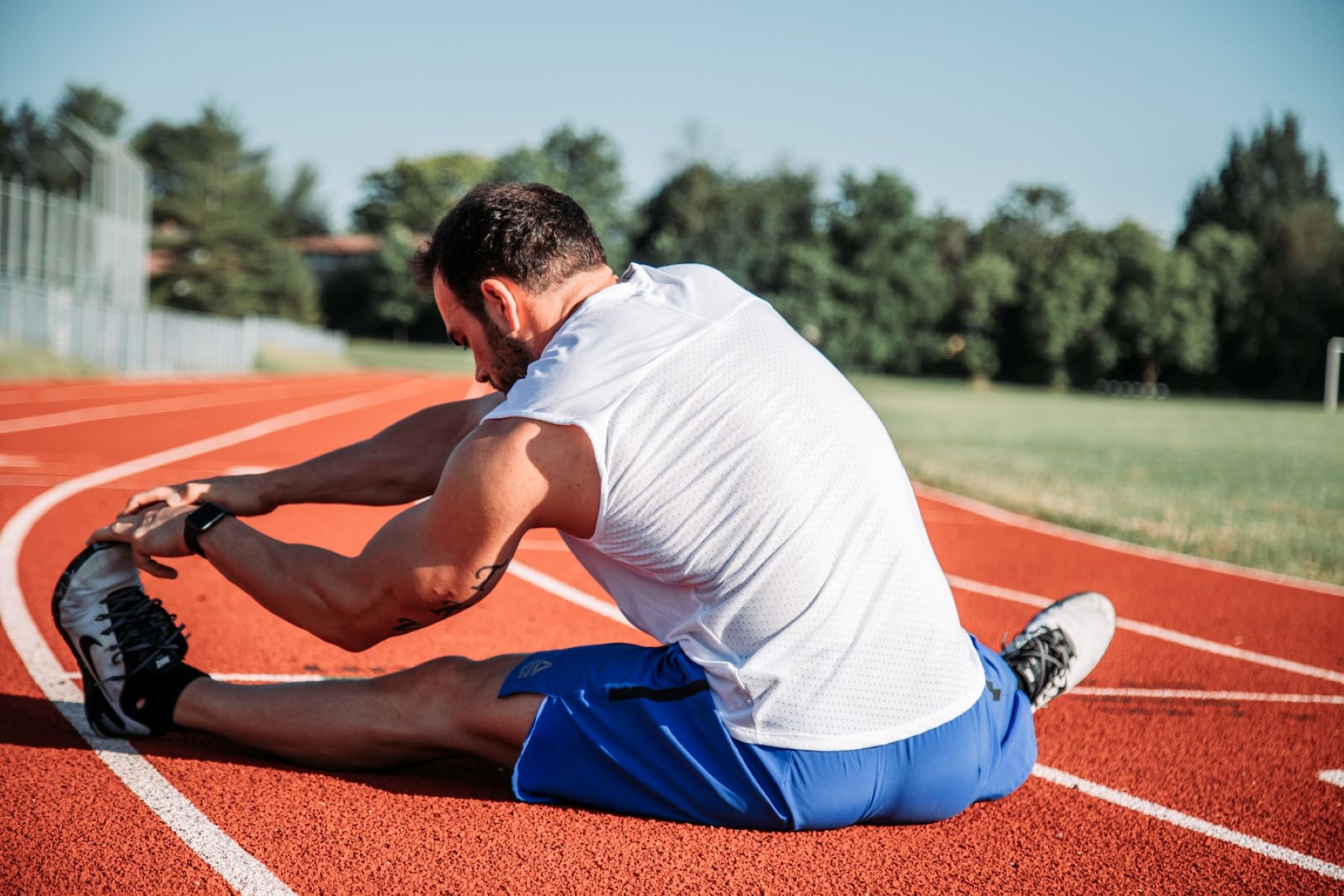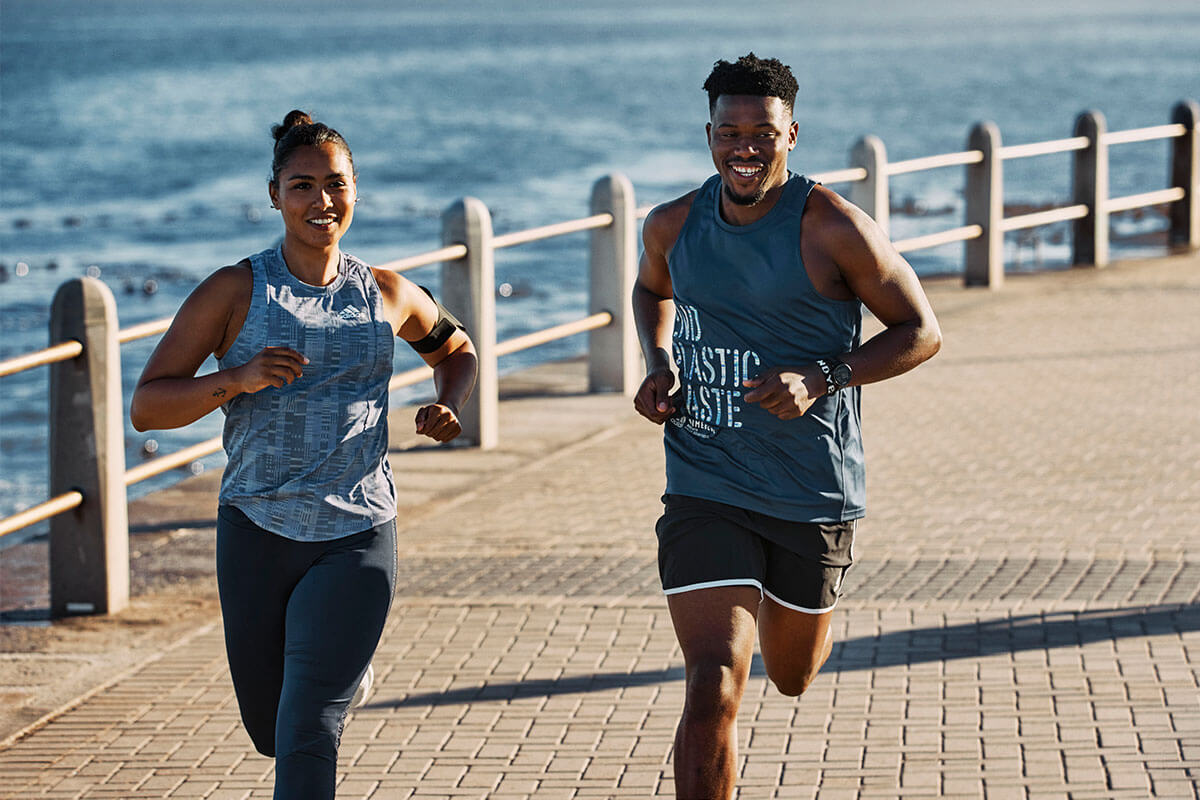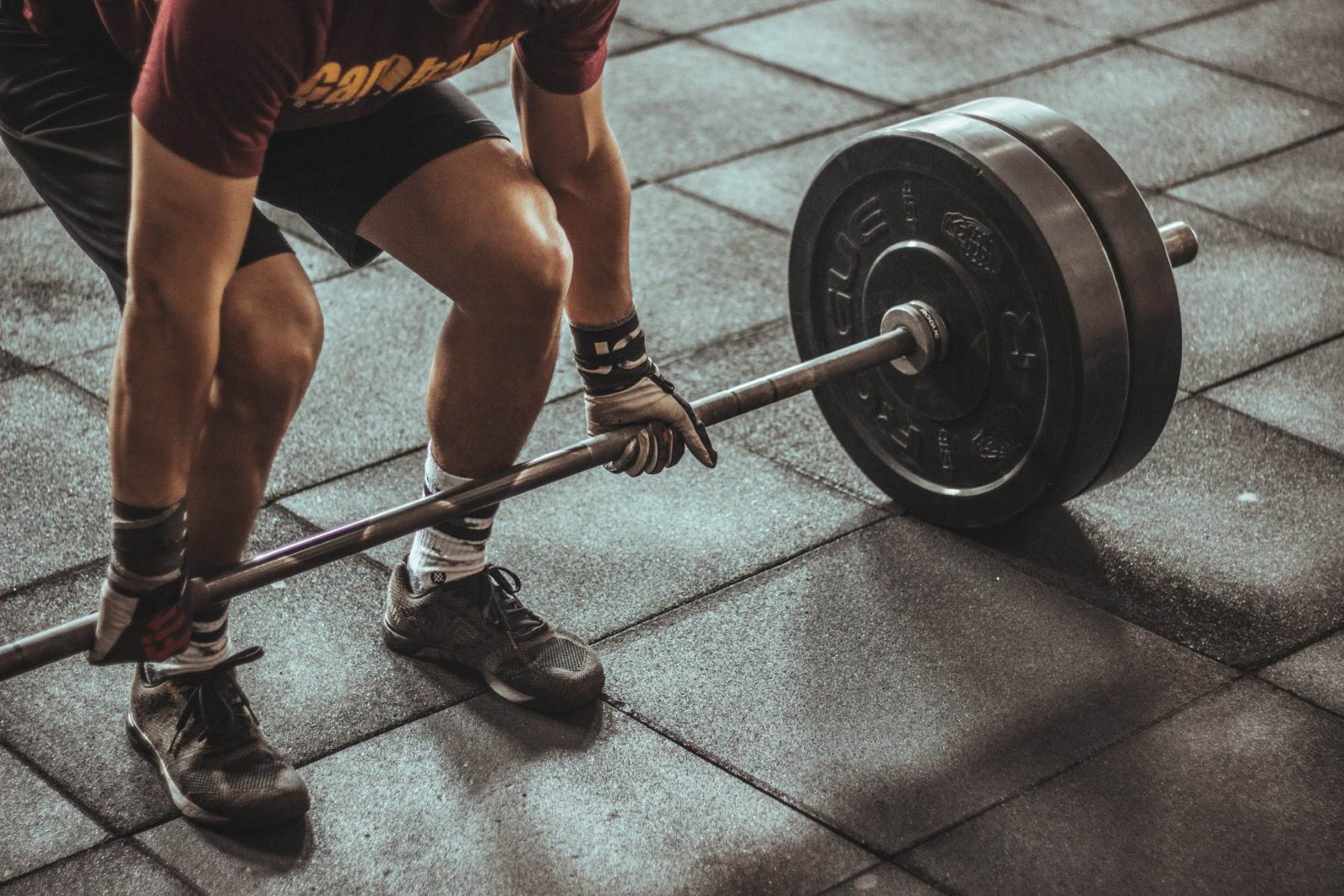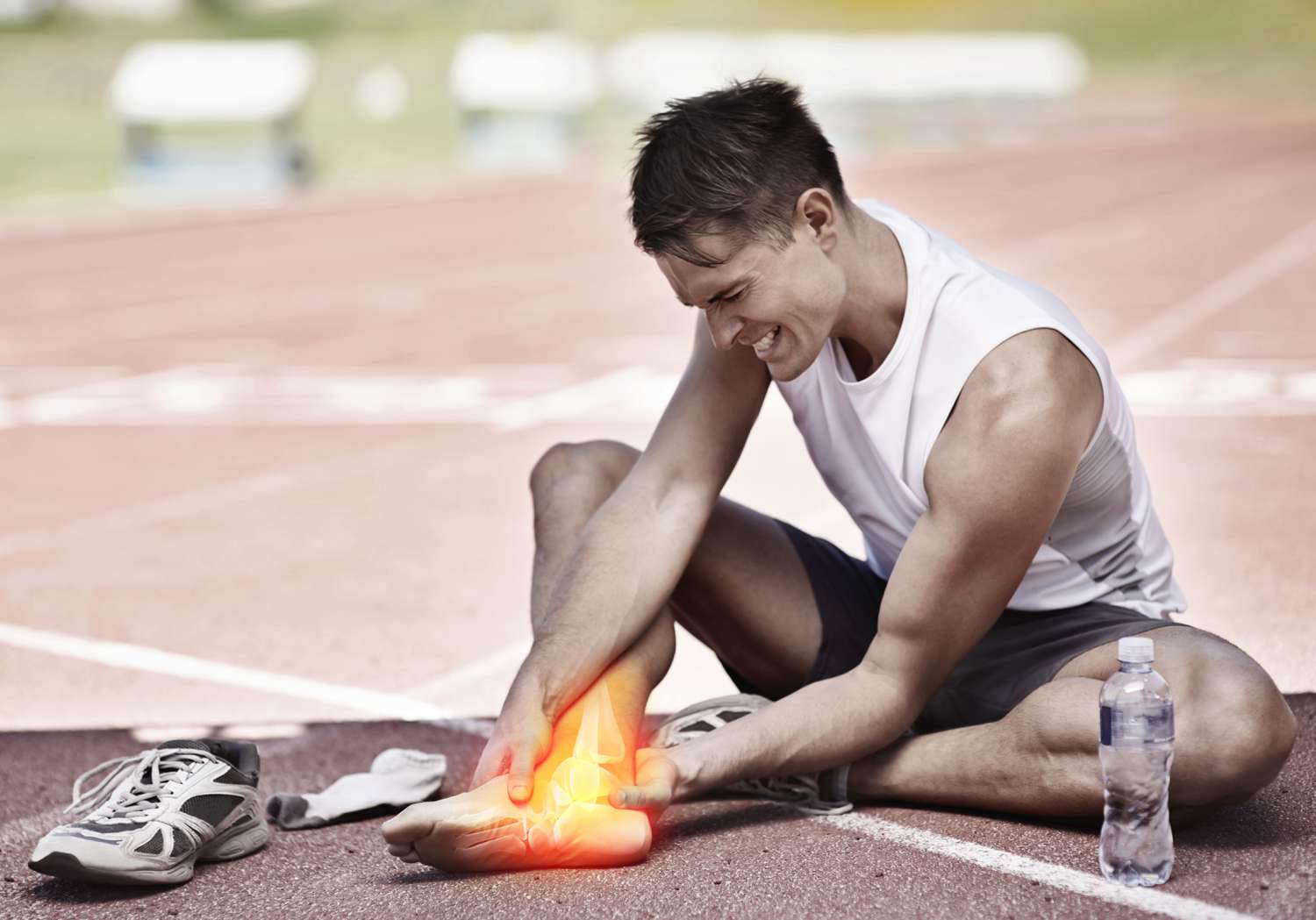Home>Misc>Featured>How To Ease Muscle Soreness After Workout
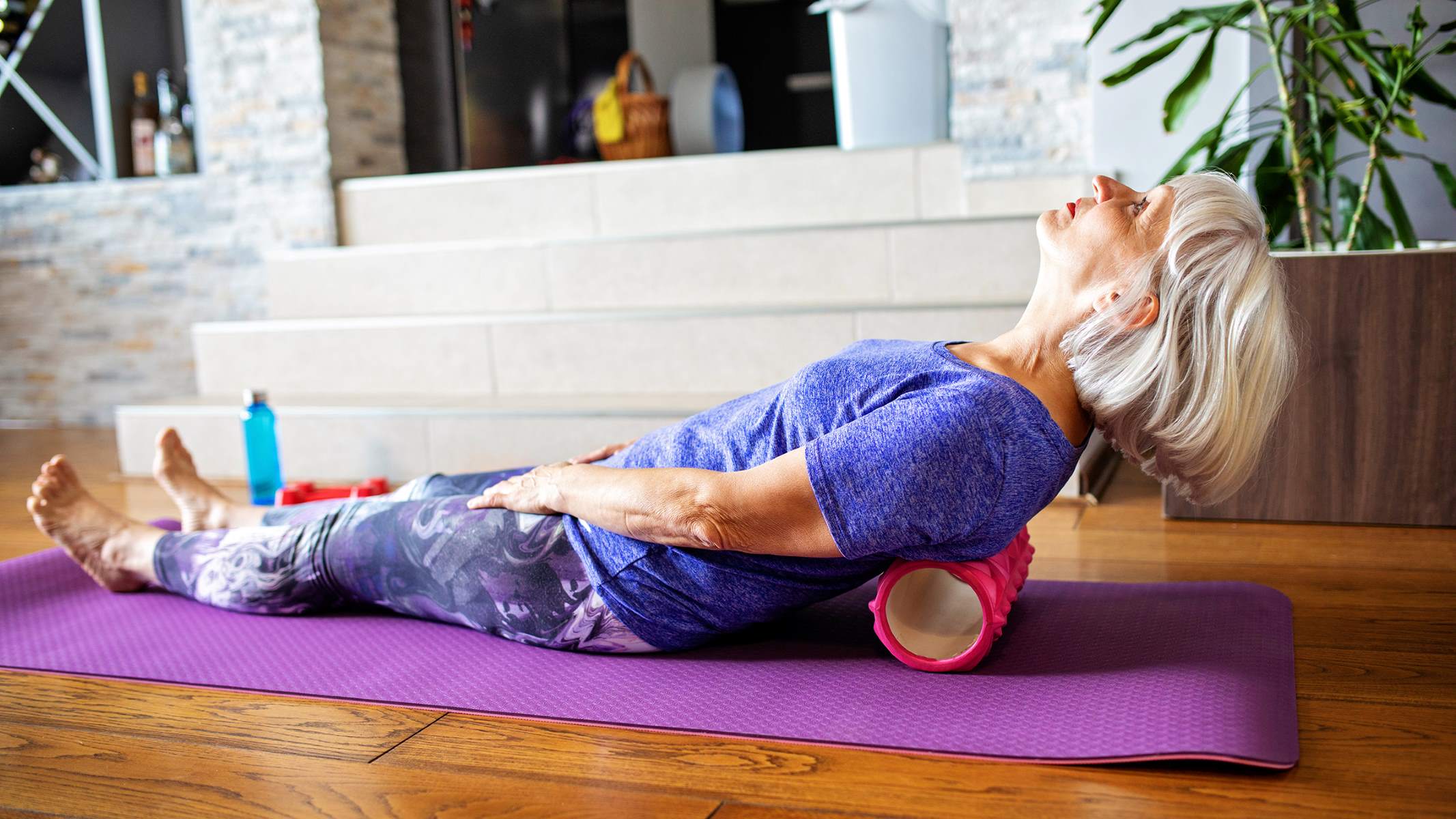

Featured
How To Ease Muscle Soreness After Workout
Modified: August 19, 2023
Learn effective ways to ease muscle soreness after your workout with our featured tips and techniques. Recover faster and get back to training with less pain.
Introduction
After an intense workout, it’s not uncommon to experience muscle soreness. You know the feeling – that achy, stiff sensation that makes it difficult to move and can linger for days. While muscle soreness is a natural response to exercise, it can be uncomfortable and even hinder your ability to perform daily activities. That’s why it’s important to know how to ease muscle soreness effectively.
But what exactly causes muscle soreness? When you engage in physical activity, especially if it’s strenuous or involves movements you’re not accustomed to, microscopic damage occurs in your muscle fibers. This results in inflammation and the release of chemicals that send pain signals to your brain, causing that familiar soreness.
While it’s impossible to completely avoid muscle soreness, there are steps you can take to alleviate it and speed up your recovery. By incorporating certain techniques into your post-workout routine, you can minimize muscle soreness and get back to your fitness goals faster.
In this article, we’ll explore various methods to ease muscle soreness after a workout. From proper stretching and warm-up techniques to the use of heat and cold therapy, we’ll cover a range of strategies to help you recover more effectively. We’ll also provide tips on rest and recovery, as well as over-the-counter pain relief options.
It’s important to note that while these methods can be effective for most people, everyone’s body is different. It’s essential to listen to your body and adjust these techniques as needed. If you have any pre-existing conditions or persistent muscle soreness, it’s always a good idea to consult with a healthcare professional.
Causes of Muscle Soreness
Understanding the causes of muscle soreness can help you better manage and prevent it. Here are the primary factors that contribute to muscle soreness:
- Delayed-Onset Muscle Soreness (DOMS): DOMS typically occurs 24 to 48 hours after exercise. It is believed to result from microscopic damage to muscle fibers and the subsequent inflammation response.
- Overexertion: Pushing yourself too hard during a workout, whether by increasing intensity or duration too rapidly, can lead to excessive muscle soreness.
- Lactic Acid Buildup: Contrary to popular belief, lactic acid buildup is not the primary cause of muscle soreness. However, it can contribute to the discomfort during intense exercise.
- Muscle Fatigue: When your muscles become fatigued, they are more prone to strain and injury, resulting in soreness.
- Improper Form: Using incorrect form while exercising can put undue stress on certain muscles, leading to soreness.
- New or Unfamiliar Activities: Engaging in exercises or activities that your body is not accustomed to can strain muscles and increase the likelihood of soreness.
By identifying the primary causes of muscle soreness, you can take preventive measures to minimize its impact. Gradually increasing the intensity and duration of your workouts, maintaining proper form, and alternating between different types of exercises can help prevent excessive muscle soreness.
It’s worth noting that muscle soreness is a normal and expected response to exercise. It indicates that your muscles are adapting and becoming stronger. However, if you experience severe or prolonged muscle soreness that affects your daily activities or performance, it’s important to consult with a healthcare professional to rule out any underlying issues.
Importance of Easing Muscle Soreness
While muscle soreness may seem like a minor inconvenience, it’s important to prioritize its management and take steps to ease the discomfort. Here’s why easing muscle soreness should be a priority:
- Improved Recovery: By effectively managing muscle soreness, you can promote faster recovery and get back to your workouts sooner. This allows you to maintain momentum and consistency in your fitness routine.
- Better Performance: When your muscles are sore, your range of motion and flexibility can be limited. By easing muscle soreness, you can restore mobility and improve your overall performance in future workouts or activities.
- Reduced Risk of Injury: Excessive muscle soreness can compromise your motor control and stability, increasing the risk of injury. By addressing soreness and promoting recovery, you can reduce the likelihood of accidents or strains.
- Mental and Emotional Well-being: Constant muscle soreness can take a toll on your mental and emotional well-being. It may lead to feelings of discouragement or demotivation. By effectively managing soreness, you can maintain a positive mindset and enjoy the benefits of regular exercise.
- Consistent Progress: When muscle soreness is left unaddressed, it can accumulate over time and hinder your progress. By taking steps to ease soreness, you can ensure a consistent and gradual progression towards your fitness goals.
It’s worth noting that easing muscle soreness does not necessarily mean avoiding all discomfort. Some level of soreness is normal, particularly when engaging in intense or challenging exercise. The goal is to find a balance between pushing yourself to improve and allowing your body enough time to recover and adapt.
By understanding the importance of managing muscle soreness, you can prioritize your recovery and make informed decisions about your post-workout routine. The following sections will explore various techniques and strategies to effectively ease muscle soreness and enhance your overall well-being.
Stretching and Warm-Up Techniques
One of the most effective ways to ease muscle soreness is by incorporating proper stretching and warm-up techniques into your exercise routine. Here are some key strategies to consider:
- Dynamic Warm-Up: Before diving into your workout, spend a few minutes engaging in dynamic warm-up exercises. These movements, such as arm circles, leg swings, and high knees, increase blood flow to your muscles and prepare them for activity.
- Static Stretching: After your workout, perform static stretches to help lengthen and relax your muscles. Focus on stretching the major muscle groups you targeted during your workout. Hold each stretch for 15-30 seconds and remember to breathe deeply.
- Active Recovery: Incorporate light activities such as walking or cycling into your cool-down routine. This gentle movement promotes circulation and helps flush out metabolic waste products that contribute to soreness.
- Yoga or Pilates: These low-impact exercises can improve flexibility, increase range of motion, and alleviate muscle soreness. Look for classes or videos that focus on stretching and relaxation.
By incorporating stretching and warm-up techniques into your routine, you can increase blood flow, flexibility, and range of motion, which can help minimize muscle soreness. However, it’s important to note that stretching alone may not completely prevent muscle soreness, particularly if you engage in highly strenuous activities or push yourself beyond your limits.
In addition to these techniques, it’s crucial to listen to your body and adjust your routine accordingly. If you experience excessive muscle soreness or have any pre-existing conditions, consult with a healthcare professional to ensure you’re performing the right exercises and stretches for your specific needs.
Cooling Down and Relaxation Exercises
After an intense workout, it’s important to give your body time to cool down and recover. Here are some cooling down and relaxation exercises that can help ease muscle soreness:
- Light Cardiovascular Exercise: Engage in low-intensity activities like brisk walking or light cycling for 5-10 minutes. This helps gradually decrease your heart rate and allows your body to transition from a state of exertion to rest.
- Deep Breathing: Take a few moments to consciously slow down your breathing and focus on deep breaths. This can help relax your body and alleviate tension that may contribute to muscle soreness.
- Stretching: After your cooldown exercise, perform gentle stretches targeting the major muscle groups you worked during your workout. Focus on maintaining proper form and holding each stretch for 15-30 seconds.
- Self-Myofascial Release (SMR): Utilize tools such as foam rollers or massage balls to release tight muscles and fascia. By applying pressure to specific areas of tension, you can increase blood flow and promote relaxation.
- Mind-Body Techniques: Practices like yoga, meditation, or tai chi can help calm your mind, reduce stress, and promote overall relaxation. These practices have been shown to have a positive impact on muscle soreness and recovery.
Incorporating these cooling down and relaxation exercises into your post-workout routine can help soothe your muscles and prevent muscle stiffness and soreness. Additionally, taking the time to relax and unwind after a workout can improve your mental well-being and overall sense of relaxation.
Remember, cooling down and relaxation exercises should not be rushed. Give yourself ample time to complete these exercises mindfully. If you find that certain activities aggravate your muscle soreness or if you have any underlying injuries or conditions, consult with a healthcare professional for tailored advice.
Foam Rolling and Self-Massage Techniques
Foam rolling and self-massage techniques are excellent ways to target specific areas of muscle soreness and tension. These techniques help release tightness, improve blood circulation, and enhance muscle recovery. Here are some effective methods to try:
- Foam Rolling: Using a foam roller, apply pressure to different muscle groups, rolling back and forth to massage the tissues. Start with broader strokes and gradually focus on specific areas of soreness or tightness. Spend about 1-2 minutes on each area.
- Massage Balls: Utilize massage balls or lacrosse balls to target smaller, hard-to-reach areas. Apply pressure by rolling the ball or by placing it against a wall and leaning into it. You can adjust the pressure by controlling your body weight.
- Trigger Point Release: Use your fingers, thumbs, or a massage tool to apply direct pressure to trigger points or knots in specific muscles. Apply firm pressure and hold for 20-30 seconds or until you feel the tension release.
- Stretch and Massage Combos: Combine stretching with self-massage techniques for a more comprehensive approach. For example, perform a calf stretch while using a foam roller or massage ball to target the calf muscles.
When using foam rollers or massage tools, focus on maintaining proper form and gradually increasing pressure over time. It’s normal to experience some discomfort during these techniques, but avoid causing excessive pain or discomfort. If an area feels too tender, adjust the pressure or avoid it altogether.
Remember to breathe deeply and relax as you perform these techniques. You can incorporate foam rolling and self-massage into your post-workout routine or as part of your daily stretching and recovery practice. However, if you have any pre-existing medical conditions or injuries, it’s important to consult with a healthcare professional before incorporating these techniques into your routine.
Use of Heat and Cold Therapy
Heat and cold therapy can be effective in relieving muscle soreness and promoting recovery. Understanding when and how to use these therapies can make a significant difference in easing discomfort. Here’s how to incorporate heat and cold therapy:
Heat Therapy:
- Warm Compress: Apply a warm compress or heating pad to the sore muscles for 15-20 minutes. The heat helps to improve blood circulation, soothe soreness, and promote relaxation.
- Warm Bath or Shower: Soaking in a warm bath or taking a warm shower can have similar benefits. The warm water helps to relax the muscles and reduce muscle tension.
- Heated Massage: Consider using a heated massage tool or receiving a professional massage with the application of heat. This combination provides targeted relief and promotes muscle relaxation.
Cold Therapy:
- Cold Compress: Apply a cold compress, ice pack, or a bag of frozen vegetables wrapped in a towel to the sore area for 10-15 minutes. The cold temperature helps to reduce inflammation and numb pain.
- Cold Bath or Shower: Submerging yourself in a cold bath or taking a cold shower can also be effective. The cold water helps constrict blood vessels, reduce inflammation, and alleviate soreness.
- Cryotherapy: Consider visiting a cryotherapy center where you can experience whole-body or localized exposure to extremely cold temperatures for a short period. This can help reduce inflammation and soothe muscle soreness.
When using heat or cold therapy, it’s important to listen to your body and avoid prolonged exposure. Be mindful of any adverse reactions or discomfort and discontinue use if necessary. Additionally, never apply ice or heat directly to the skin; always use a towel or cloth as a barrier to protect your skin.
Heat therapy is generally more effective for chronic muscle soreness, while cold therapy is most beneficial for acute muscle soreness or immediately after an intense workout. Experiment with both approaches to find what works best for your body and the specific type of muscle soreness you’re experiencing.
If you have any existing medical conditions, circulatory problems, or if you’re unsure about using heat or cold therapy, consult with a healthcare professional for personalized advice.
Proper Nutrition and Hydration
Proper nutrition and hydration play a crucial role in managing muscle soreness and optimizing recovery. By fueling your body with the right nutrients and staying hydrated, you can support muscle repair and reduce the impact of soreness. Here are some key considerations:
Nutrition:
- Protein Intake: Consuming an adequate amount of protein is essential for muscle repair and growth. Include lean sources of protein, such as chicken, fish, tofu, or legumes, in your meals and snacks throughout the day.
- Anti-Inflammatory Foods: Incorporate foods rich in anti-inflammatory properties, such as leafy greens, berries, fatty fish (like salmon), nuts, and seeds. These foods can help reduce inflammation in the body, potentially minimizing muscle soreness.
- Healthy Fats: Include sources of healthy fats, like avocados, olive oil, and nuts, in your diet. These fats provide essential nutrients and help reduce inflammation.
- Carbohydrates: Don’t neglect carbohydrates, as they provide energy for workouts and aid in replenishing muscle glycogen stores. Opt for complex carbohydrates like whole grains, fruits, and vegetables.
Hydration:
- Water Intake: Stay well-hydrated before, during, and after your workout. Water helps transport nutrients to your muscles, improves circulation, and flushes out metabolic waste products.
- Electrolyte Balance: During intense workouts, you lose electrolytes through sweat. Replenish them by consuming electrolyte-rich beverages or foods, such as coconut water or electrolyte tablets.
- Post-Workout Recovery Drinks: Consider consuming a post-workout recovery drink or protein shake that includes carbohydrates and electrolytes. This can aid in muscle recovery and hydration simultaneously.
Remember, proper nutrition and hydration should be a consistent part of your overall lifestyle, not just after workouts. By fueling your body with the right nutrients and staying hydrated, you’re setting yourself up for better muscle recovery and reducing the severity of muscle soreness.
If you have any specific dietary requirements or conditions that impact your nutrition, it’s advisable to consult with a registered dietitian or nutritionist for personalized guidance.
Rest and Recovery Strategies
Rest and recovery are essential components of any fitness routine. Adequate rest allows your body to repair and rebuild muscles, reducing muscle soreness and promoting overall recovery. Here are some effective strategies to incorporate into your rest and recovery routine:
- Quality Sleep: Aim for 7-9 hours of uninterrupted sleep each night. During sleep, your body releases growth hormones that aid in muscle repair and recovery.
- Active Rest Days: Include active rest days in your workout schedule. Engage in light activities such as leisurely walks, gentle yoga, or stretching. These activities promote blood flow, helping to minimize muscle soreness.
- Active Recovery Workouts: On your rest days, consider incorporating low-impact activities that focus on mobility, flexibility, and relaxation. This can include activities like swimming, Pilates, or gentle cycling.
- Massage or Bodywork: Treat yourself to a professional massage or try other bodywork techniques such as acupuncture or chiropractic care. These therapies can help reduce muscle tension and promote relaxation.
- Contrast Showers: Alternate between hot and cold water during your shower to stimulate circulation and reduce inflammation. Start with warm water for a few minutes, then switch to cold water for a short duration. Repeat for several cycles.
- Mindfulness Practices: Engage in stress-reducing activities like meditation, deep breathing exercises, or mindfulness practices. These techniques can help calm the mind, reduce muscle tension, and promote relaxation.
- Listen to Your Body: Pay attention to how your body feels. If you’re experiencing excessive muscle soreness or fatigue, it may be a sign that you need more rest. Adjust your workout schedule accordingly to allow for proper recovery.
Remember that rest and recovery are crucial for overall well-being and optimal performance. It’s important to balance challenging workouts with sufficient rest to prevent overtraining and reduce the risk of injury.
Everyone’s rest and recovery needs may differ, so it’s essential to listen to your body and make adjustments that work best for you. If you have any concerns or persistent muscle soreness, consult with a healthcare professional or a certified fitness trainer for guidance tailored to your specific needs.
Over-the-Counter Pain Relief Options
If muscle soreness persists or becomes too uncomfortable to manage through natural methods, over-the-counter (OTC) pain relief options can provide temporary relief. Here are some commonly used OTC pain relief options for easing muscle soreness:
- Nonsteroidal Anti-Inflammatory Drugs (NSAIDs): Medications such as ibuprofen or naproxen sodium can help reduce inflammation and relieve muscle soreness. Follow the recommended dosage instructions and consult with a healthcare professional if you have any underlying health conditions or are taking other medications.
- Topical Analgesics: Creams, gels, or patches containing ingredients like menthol, camphor, or capsaicin can provide a soothing effect and temporarily alleviate muscle soreness. Follow the instructions on the product label for proper application and duration.
- Acetaminophen: This medication, commonly known as Tylenol, can help relieve pain but lacks anti-inflammatory properties. It can be a suitable option if inflammation is not a significant factor in your muscle soreness.
- Magnesium Supplements: While not technically an OTC pain relief option, magnesium supplements can contribute to muscle health and relaxation. Ensure you follow the recommended dosage and consult with a healthcare professional if you have any concerns or underlying health conditions.
It’s important to note that OTC pain relief options provide temporary relief and do not address the underlying cause of muscle soreness. They should be used as a short-term solution while you implement other strategies, such as rest, recovery, and proper nutrition, to promote long-term relief and recovery.
Furthermore, it’s crucial to follow the instructions and recommended dosages provided with these OTC medications. If muscle soreness persists or worsens despite using OTC pain relief options, or if you have any concerns, it’s always advisable to consult with a healthcare professional for a proper diagnosis and further guidance.
When to Seek Medical Attention
While muscle soreness is generally a normal response to exercise, there are instances when it’s necessary to seek medical attention. Here are some signs and symptoms that warrant a visit to a healthcare professional:
- Severe or Persistent Pain: If your muscle soreness is severe, lasts longer than expected, or is interfering with your daily activities, it’s important to consult with a healthcare professional. They can help identify the underlying cause and provide appropriate treatment.
- Unusual Swelling or Bruising: If you notice significant swelling, bruising, or redness in the affected muscles, it could indicate a more serious injury or condition. Seeking medical attention is crucial to determine the extent of the damage and receive proper care.
- Difficulty Moving or Functioning: If muscle soreness is accompanied by difficulty moving a specific joint or muscle group, it could be a sign of a more serious injury, such as a strain or sprain. Seeking medical attention can help prevent further damage and expedite the healing process.
- Weakness or Numbness: If you experience weakness or numbness in the affected muscles, it could be a sign of nerve involvement. This requires prompt medical evaluation to identify the cause and prevent further complications.
- Pre-Existing Medical Conditions: If you have any pre-existing medical conditions, such as heart disease, hypertension, or diabetes, it’s advisable to consult with a healthcare professional, especially if you experience severe muscle soreness after exercise.
Remember, it’s better to err on the side of caution and seek medical help if you have any concerns about your muscle soreness. A healthcare professional can provide a proper diagnosis, recommend appropriate treatments or therapies, and help you navigate any underlying conditions that may contribute to your symptoms.
If at any point you experience sudden or severe pain during exercise, seeking immediate medical attention is crucial, as it could indicate a more serious injury or medical emergency.
Ultimately, prioritizing your health and well-being should always be the top priority when addressing muscle soreness. Consulting with a healthcare professional can provide peace of mind and ensure your recovery is on the right track.
Conclusion
Muscle soreness is a common and often unavoidable result of physical activity. However, by implementing effective strategies to ease muscle soreness, you can minimize discomfort and aid in your overall recovery. Incorporating stretching and warm-up techniques, cooling down and relaxation exercises, foam rolling and self-massage techniques, heat and cold therapy, proper nutrition and hydration, rest and recovery strategies, and knowing when to seek medical attention are all essential components of an effective post-workout routine.
Remember to listen to your body and make adjustments as needed. What works for one person may not work for another, so it’s important to find the strategies that suit your needs and align with your specific health and fitness goals. By taking care of your muscles, promoting recovery, and incorporating these techniques into your routine, you can maintain a consistent exercise regimen and optimize your performance.
It’s crucial to understand that muscle soreness is a natural part of the fitness journey and should not discourage you from pursuing an active lifestyle. Embrace the discomfort as a sign that you are challenging yourself and making progress. With time and proper recovery techniques, your muscles will adapt and grow stronger.
If you have any persistent or concerning muscle soreness that hinders your ability to function or if you have any underlying health conditions, it’s always recommended to consult with a healthcare professional. They can provide personalized advice, address any specific concerns, and guide you on the best course of action.
Learning how to effectively ease muscle soreness is a valuable skill that can enhance your fitness journey and overall well-being. By taking care of your body, addressing soreness in a timely manner, and implementing proper recovery techniques, you can achieve your fitness goals while minimizing discomfort along the way.

